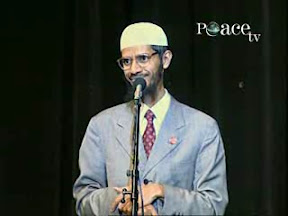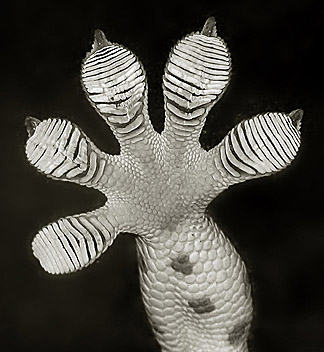" It is He Who brought you forth from the wombs of your mothers when ye knew nothing; and He gave you hearing and sight and intelligence and affections: that ye may give thanks (to God)." [Quran 16:78]
Before we go into the subject, lets read these interesting facts
Did You Know That...?
- every second, the retina in our eye performs billions of computer-like calculations, as it measures distances, intensities, focal lengths, colors and hues, and tones of dark and light on all the objects we see.
- we are aware of our surroundings because our eyes pick up light rays, and the cones and rods in our eye convert the information (about size, distance, patterns, color, etc.) to electrical impulses and send it to the brain.
- our eyes, when accustomed to darkness, can sense as few as 10 quanta of light (the glow of a candle flame 10 miles distant).
- our eyes are constantly in motion, flicking from one image to another several times a second.
- the fluid nourishing the interior of the eye is colorless and clear. If it were the color of blood, light would be stopped before it reached the retina, and we would not be able to see.
- we see color because we have some 7,000,000 cones in our eyes which are of three types, each having one pigment (red, green or blue) and able to absorb that part of the color spectrum.
- our eyes are equipped with their own anti-bacterial cleansing agent, so that unwanted bacteria entering the eye are immediately dissolved.
- the retina of our eye contains from 75 million to 150 million rods (tiny photoreceptors) which are continually picking up light that is reflected to our eye.
- our eyes, when accustomed to darkness, are 10,000 times more sensitive to light than when they are light adjusted.
Suppose you could make a camera that would operate for fifty years without needing a new battery, or even a new roll of film. Suppose further that this camera was self-focusing, self-repairing, self-adjusting to intensities of brightness or darkness, that it could retain a picture in its library for fifty years or more—would you not have quite a remarkable product, one that everyone would want? Our eyes are all of this, and much, much, much more.

The human eye has a coloured iris that expands or contracts as the level of light brightness increases and decreases. The black "opening" of the eye at the centre of the iris is called the pupil. A camera lens is very similar: there is a diaphragm that expands and contracts much like the iris; and the aperture, which is the opening that light passes through to form an image on the sensor or in the view finder. However, the reason for expanding and contracting the size of the aperture is somewhat different for camera than for eye. We control aperture both to change depth of field (how much of the scene is sharp from closer to the camera to farther away) and as part of the process of controlling how short or long a period of time the picture will be taken within.
Our eyes are unbelievably complex. Even to suggest that this small organ, only an inch from side to side, came about by the mere working of chance, without design or constructive plan, is a shameful insult to our great Creator. Would the men and women in the Eastman Kodak Company who designed the new Kodak Digital Camera 40, just now being marketed, be pleased with the idea that this device came about without intelligent guidance, that it was simply another automatic generation in a constantly improving series of cameras? Kodak employs thousands of highly trained research personnel, who spend all their working hours originating and developing new ideas in camera technology. Yet what is the most sophisticated camera beside the human eye?
"....Say, “Is a blind man comparable to the one with eyes? Are darkness and daylight equal? Have others, like the partners you ascribe to Allah, created anything that matches His creations? Is that the doubt?” Say, “Allah alone is the Creator of all things! He is the One and Only, and He is the Omnipotent!” [Quran 13:16]
The Eyelid
Let's begin by thinking about the eyelid. Now the eyelid should be a simple structure, just a piece of muscle we can pull down and up to cover or uncover our eye as needed…? Wrong. The eyelid is a highly complex mechanism, and vitally important to protect the eye. But imagine how useless our eyelids would be for the defense of the eye if they were left for us to operate—imagine if we had to think every time we blinked, or if we had to think to draw our eyelids over our eyes when a foreign object threatened our eye.
But no, our Creator has freed us from this cumbersome task by installing an intricate system of nerves and reflexes, too much to talk about here but marvelous in its operation.
Actually, it has been found that the eyelids do even more than protect the eye. Each time we blink, our eyelids, acting much like the windshield wipers on our car, sweep a thin film of fluid across the eyeball, lubricating them and keeping them clean. Any excess drains into our nose through tiny ducts in the lower inner corner of our eye.
What is this fluid? Several glands in our eyelids contribute to this fluid. Most familiar are the tear glands, which supply a form of salt water to the eyes through tiny ducts—we have from 3 to 12 of these ducts—at the outer upper corner of each eye.
But our eyes need more than water—because water would soon evaporate and leave our eyes dry and scratchy. So our Creator has supplied us with another set of glands that secrete a fine, oily substance which does not evaporate. And this is not all. There is yet another gland in our eyelid that secretes an antibacterial agent into our eyes, so that foreign bacteria entering the eye are immediately dissolved.
Can anyone think honestly that all this came about by mere happenstance?
There is no way of separating the eyelid from the eye—they are literally attached—but not too firmly. Can we imagine what it would be like if our eyelid were attached so tightly to our eye that we could not move our eye? But no, the eyelid is composed of 4 layers, and the innermost layer, which attaches to the surface of the eyeball, is loose enough to allow complete movement of the eyeball in all directions, and ample enough to supply a complete protective covering. (Was this delicate balance achieved by chance?)
Also within the eyelid are several specialized muscles, some voluntary and some involuntary. We blink every 2 to 10 seconds. The rate of blinking varies from one person to another, and is controlled, it is believed, by a “blink control center” in our brain. Our eyes blink by a set of involuntary muscles, without any direction from us.
Yet we are not left without control—we can easily overrule that blinking and close or blink our eyes at will—by using another set of muscles.
The Structure of the Eye
Now let's look at the eye itself.
The eye is made up of three coats (layers), which enclose a spherical center area that is filled with a clear liquid to keep the eye firm.
The outermost coat consists of a transparent area (the cornea) through which light enters the eye, and an opaque, white area on either side of the clear area. The second coat (layer) determines if our eyes are black our blue. The third layer is where the light that enters our eyes is interpreted.
If this seems relatively simple, let's look a bit closer at each coat.
Coat 1: The outer layer, the transparent window glass of the eye, is itself made up of five distinguishable layers, each composed of transparent tissue and each critical to the functioning of the eye. One of these sub-layers is a set of about 200 plates, which are stacked much like the leaves of a book; each plate consists of transparent microscopic fibers. And, remember, this is just one of five layers of the outer coat of the eye. (What law of evolution designed transparent tissue, then made it grow in just the right place in our body, where light must enter?)
 |
| Light passing through the lens and being brought into focus |
Coat 2: The next (middle) coat contains a ring of tissue at the front (the iris), which gives the eye its color. At the center of this ring is the pupil, which enlarges or contracts to control the amount of light entering the eye.
Coat 3: Perhaps the most intricate part of the eye is the third or innermost coat, which contains the retina. In the retina, light is received, images are focused, photoreceptors are exposed, and light images are converted to electrical impulses which are then sent down the optic nerve to the brain, where they are interpreted, so that we know what we are seeing.
Ten different layers are visible in the retina. The first layer contains the eye's light-sensitive cells, which are of two kinds, called rods and cones (the terms are descriptive of the shape of the cells). In the retina are about 7,000,000 cones, and from 75,000,000 to 150,000,000 rods. The rods pick up shades of grey, while the cones are usually thought to be sensitive to the various wavelengths of color. These cones and rods are attached to about 1,000,000 optic nerve fibers (in another layer of the retina), which carry electrical impulses to the brain. Because there are only about 1,000,000 optic nerve fibers to 150,000,000 receptors, a number of receptors must share a single optic pathway.
The rods and cones of the retina are distributed across its surface, but not evenly, as might be expected. Near the center of the retina is a pinhole-sized cup called the fovea.
The fovea—1/100th of a millimeter across—has some 4,000 cones concentrated in it. This area gives us our keenest, most sharply focused vision. When we really want to focus closely on something of interest, we use the fovea. Why are images so sharp from this area? Because each one of the cones in the fovea is attached to a nerve fiber, giving it a direct pathway to the brain.
Can we think for a moment that any undirected chance designed such a light-sensitive, light-interpreting structure as our eyes, with 150,000,000 photoreceptors continually picking up information from light waves that enter the eye? Could the elements of chance produce even one hundred photoreceptors that would function daily—and keep functioning—for 70 or 80 plus years?
Vision involves a continuous interaction between the eye, the nervous system and the brain. If we had eyes without a connection to the brain, we would see nothing. Or if we had a nervous system and a brain without a device for receiving light rays, we would see nothing. But our great Creator has designed all three to work together—light to reflect into the eye, photoreceptors in the eye to pick up the light and convert it into electric impulses, and a brain to receive and interpret the impulse. So equipped, we are able to look at an object and—most often—identify it without giving the process a conscious thought.
As soon as we open our eyes at birth, we begin to learn through the gate of the eye. And the process goes on as long as we live.
Our eyes pick up light reflected from an image, and the image is projected on a postage-stamp-size screen on the retina in our eye. The image as it arrives is upside down, but as quickly as the image hits the screen of our eye, millions of light sensitive receptors on the retina record the intensity, the color, the angle of the light striking each tiny rod or cone, and transmit an electrical impulse to the brain by way of nerve fibers. At the brain, these impulses are assembled and interpreted by being compared with the “similar records” (memory) of previous impulses that have been received and archived, and we are able to identify what we see. The details of the process are beyond the scope of this article, but who can help but marvel at the process that goes on every waking hour every day, and give thanks to Him who made us able to see!
Some have speculated that information gathered by our eyes goes to an information relay center in the brain, where it is coordinated with impulses sent by other sensory organs (touch, smell, feeling, hearing, etc.). There is still much to be learned about how the eye sees.
The Eyes' Pump
Studies have shown that the cornea steadily takes in fluid, which it needs. But if it takes in too much fluid, it swells; and if the fluid stays in the eye, the eye loses its transparency and vision becomes blurred or cloudy. So the fluid intake is counteracted by a tiny pump that expels the fluid as fast as it enters. This pumping action creates a balance so that the cornea does not swell, and so that fresh fluid is continually supplied, keeping the liquid transparent. Since the innermost layer of the eyelid is directly responsible for maintaining pressure in the pump, if the eyelid's lining becomes torn, vision is affected—because the pump cannot operate effectively.
Who can say that such a mechanism simply evolved, without any intelligent direction?
Eye Movements and Adjustments
Another wonder of our eyes is their ability to keep imaging on a level plane, however we may tilt our head. Look at something level—a tabletop, a shelf, the roof of a house.
Now continue looking at that object while you tip your head just a little to the left. The level object still appears level. Keep tipping your head to the left until you have bent your body slightly. The level object still appears level. If we stand on our heads, so that our eyes are upside down, everything we see does not look inverted. How is this possible?
Because our eyes adjust for the movement of our head—however much or little—so that level images continue to appear level.
Imagine what it would be like if everything we looked at appeared to tip just because we tipped our head!
God has designed our eyes to adjust for the continuous movements of our head, so that the image on the retina stays level. Our eyes are also moving continually to pick up additional bits of information so that our brain can keep updating its information—it is estimated that the eyes are never stationary for more than a fraction of a second.
Actually, our eyes make three types of movements. Most common are the small, irregular, involuntary movements, of which the eye is said to make between 30 and 70 per second. The eye also makes flicks—in larger movements, also involuntary—about one per second. Third, our eye makes slow, irregular drifts which extend over longer intervals. The rapid movements of the eye are thought to be necessary to allow the contours of an image to fall on new sets of rods and cones at repeated intervals, so that the retina keeps sending messages to the central nervous system.
Can we say that any or all of this power of motion came about by chance?
These eye movements are done primarily by six muscles, which are attached to the outside of the eye. One muscle pulls in a circular motion, another acts like a pulley, another operates on an oblique angle and passes under the eyeball like a sling, and so on, allowing the eye to turn quickly in any direction.
It is thought that the two distinct types of movements of the eye, the high frequency movements (30—70 per second) and the slower movements are controlled by two totally different sets of muscles. The velocity of the high frequency movements is relatively slow (about 25 degrees per second), whereas the velocity of the slow movements is very high (about 500 degrees per second). Again let us ask: Did such a system of motion just happen?
Marvels, Marvels…
Our eyes are wonderfully adaptable to changing amounts of light or darkness. Go into a totally dark room, and you can hardly see anything. But stay there about 30 minutes, and your eyes have adjusted so drastically that they now are about 10,000 times more sensitive to light than when you entered. (If our eyes were to retain this high-sensitivity in bright light we would soon be blind.)
When the eye is dark-adapted, it is thought that the rods are utilized rather than cones, because the amount of light they require to “see” is much lower than that required by the cones. This idea is confirmed by the fact that we cannot distinguish color when light is very limited.
Summary
We have only touched on a few highlights of a vast subject, where many questions remain unanswered even by those who know the most about it. But haven't we observed enough to thank God for our eyes, those small, half-inch organs we use every day in so many ways, with scarcely a thought?
Who cannot say, with all humility and reverence, that the hand that made us is Divine!
"Say: It is He Who has created you (and made you grow), and made for you the faculties of hearing, seeing, feeling and understanding: little thanks it is ye give." [Quran 67:23]
--
Source:
- Compton's Interactive Encyclopedia, Copyright 1993, 1994 by Compton's NewMedia, Inc.
- . P. Mattingly & M. L. Rubin in The 1995 Grolier Multimedia Encyclopedia; Eyes, Their Problems and Treatments, M. Glasspool, MD, published by Arco Publishing, Inc. New York
- The Incredible Machine, published by National Geographic Society, Washington, DC.
- The Encyclopaedia Britannica, 15th Edition, 27:721ff.
- Image: iris on a sky background & blue eye courtesy of Creative Commons and Wikipedia.org (Attribution 2.0)



















































